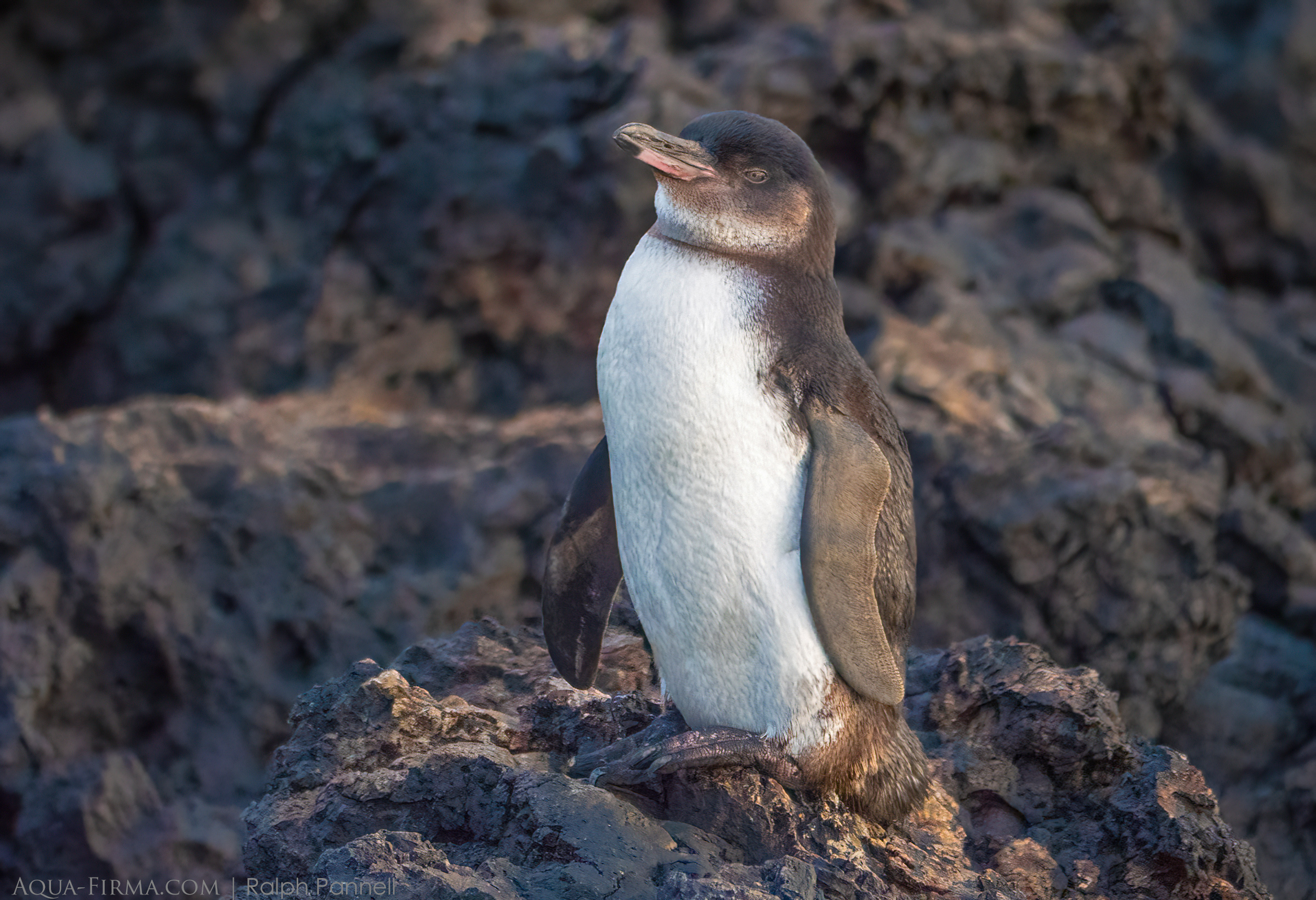Galapagos Shark Research Insights & Photography Dive Liveaboard
Galapagos
US$5,990
Penguins are best known in Antarctica of course; but there is one penguin which exists in both the Northern and Southern Hemispheres. This is the Galapagos penguin.
Penguins need productive cold waters, where they can feed on plentiful stocks of fish. Antarctica and the sub-Antarctic islands of South Georgia, the Falklands, Macquarie, Campbell and Tristan da Cunha all support healthy populations. The Humboldt Current, which flows up the coasts of Argentina, Chile and Peru, supports sizeable populations of Magellanic and Humboldt Penguins. This current extends as far as the Galapagos, where the specially adapted and endemic Galapagos Penguin is able to survive at the Equator.

At times, the Galapagos penguin literally clings to life, centred in areas where the water is coldest. The Cromwell Current, or Pacific Equatorial Undercurrent, flows into the west of the Archipelago, driving nutrient rich waters up from the cold depths of the Pacific, to the sea surface along the west coast of Isabela and Fernandina islands. Whilst Galapagos penguins live in greatest numbers along these coastlines, it is the cold waters of the Humboldt Current which brought them to the Galapagos in the first place.
Since first arriving at the Equator, penguins in the Galapagos have adapted to unshaded heat by becoming smaller (just 2kg) and adopting a thin plumage. To prevent sunburn on their webbed feet, their bellies droop over to spare them from the sun's glare.
Between June and November of most years, the cold Humboldt Current prevails over the warm Panama Current. This provides a seasonal boost in fish life for the penguins, making up for leaner times from December to May. As cold water spreads in from the south east, penguins spread to meet it, enjoying a bonanza of fish and reducing competition for food in the process. This spreading out also provides visitors with wider opportunities for spotting penguins.
Penguin Breeding
The arrival of cooler waters and more food encourages Galapagos penguins to come ashore, moult, nest and mate. The process takes 2 weeks during which time penguins can lose a quarter of their body weight. If food is plentiful then a female may lay two eggs. When there is less food, they will lay just one. If food supply is sustained then the chicks can develop. If food supplies drop then one, and possibly both chicks will be abandoned.
Clinging to Life
As with Galapagos Fur Seals and Sealions, penguins have a tough time of it when El Niño events delay the arrival of cold productive waters. The most dramatic El Niño event in recent years was in 1982-1983. During that event, around 75% of Galapagos penguins starved to death. El Niño is a natural phenomenon and penguin populations bounce back. With climate change, however, they are becoming more regular, which could lead to long term decline of Galapagos penguins.